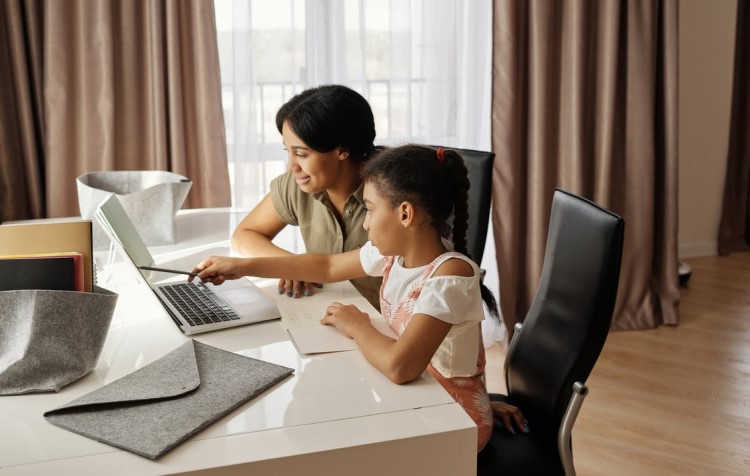23 January 2020 – A date that many would shudder when they recall this date. Health authorities and residents of Singapore collectively sigh as we think back on this date. This was the date that the first case of Covid-19 was confirmed in Singapore.
Unexpected isn’t it? This strange, unknown virus has come and swept most (if not all) countries around the world into a state of flurry. This pandemic would undoubtedly rank as one of the most unexpected moments in history. And yes, it has certainly changed the way in which we see things and is definitely going to bring in changes in the way we do things. But what if some good has come out of this crisis? Let’s focus on what COVID has taught us in the realm of education. All of us (students, parents and teachers) felt the immediate impact of the COVID-19 on education (the months of Home-based Learning are surely still fresh in memory). But the pandemic has induced us to think more about the future of education as well.
What did we learn during COVID?

The pandemic forced us to move en masse to the online mode of learning, at least for a short duration of time. Instead of asking kids to put their gadgets away, parents and teachers had to ask kids to pick up their gadgets for the purpose of education. Both teachers and parents scrambled in a mad rush to be more familiar with online teaching platforms, and were forced to hop on the tech bandwagon. In many cases, kids turned into trainers for parents who obviously needed a hand or two.
But what did all this Home-based Learning teach us? Well, it did make it quite clear that online learning could indeed be an effective supplement to traditional class-based learning. Conventional class-based learning definitely has a number of merits which would be hard to achieve through the online platform. But the pandemic has shown us that online learning is an idea that deserves to be pursued with more openness and creativity. There have also been indications from government sources that Home-based Learning could become part of the normal school routine (The Straits Times, 17 June 2020 – “All secondary school students to get personal laptop or tablet for learning by 2021: Tharman”).
Pandemic resistant learning
With the experiences of the past half-a-year, we learn that we now have new priorities. What are they? We realise that we need to plan in advance for periods where our kids might not be able to ensure physical presence in conventional classrooms. We now realise that we need to craft educational systems that are resilient to pandemics and similar unexpected threats.
To all those who were sceptical about online learning, the past few months was a crash course that would have altered their perspectives by at least a small measure. The pros of online learning such as the flexibility it offers were experienced more during the first half of this year.
The idea of having to spend more time with gadgets at home would surely seem like fun to our kids. But there are a few things to keep in mind here.
Taking everyone along

We cannot leave even a single one of our kids behind as we explore more efficiently the option of online learning. So what does this mean? It means getting more gadgets into the hands of our kids who do not have access to them. It also means that we need to ensure that all learners have access to stable and high-speed internet connections. Thankfully, policymakers have been proactive in this regard and have rolled out the National Digital Literacy Programme with aims that would further these goals of digital accessibility.*
Learning for the future
The global economy and job markets are undergoing significant transformations as well. With the added emphasis on skill development, online learning is set to get a further push. Why do we say so? Because online learning opens access for learners to pursue a plethora of skill development courses without the limitations of geography or time.
The lessons from COVID-19 in the field of education are clear. The online options hold a ton of potential within them. We need to ensure blanket coverage for our kids to access online learning. This can definitely turn into an educational revolution that would further empower and enrich our students. The prospects are bright for online education in the post-COVID order. So, what are we waiting for? Let’s hop online and make use of the bountiful opportunities now!
*More details of the Digital Literacy Programme: https://www.moe.gov.sg/microsites/cos2020/refreshing-our-curriculum/strengthen-digital-literacy.html
Exam Smart Tips
Exam Smart Tip #1 – How to Encourage Our Kids to Speak Better?
Exam Smart Tip #2 – How to avoid carelessness?
Exam Smart Tip #3 – Establishing Routines!
Exam Smart Tip #4 – Let’s Read Carefully!
Exam Smart Tip #5 – Beating the Exam Fever!
Exam Smart Tip #6 – How to Eat Right for the Exams?
Exam Smart Tip #7 – How to Avoid a Meltdown?
Exam Smart Tip #8 – Taking Stress out of Tests
Who We Are
Mission statement – “Empower every student to achieve full potential”
88tuition Pte Ltd offers the best PSLE Tuition Singapore for children looking to ace the PSLE exam. With effective learning materials and high-quality explanatory videos by experienced trainers, children are provided with the best online PSLE tuition.
With the basics learnt well, children will be able to grasp advanced concepts easily. Looking for the best PSLE math tuition, PSLE Science tuition and PSLE English tuition in Singapore? 88tuition has got you covered. The online training videos and assessments are designed in a way that children are made to enjoy the learning process.
UEN 201817310C
271 Bukit Timah Road; #03-08; Singapore 259708



